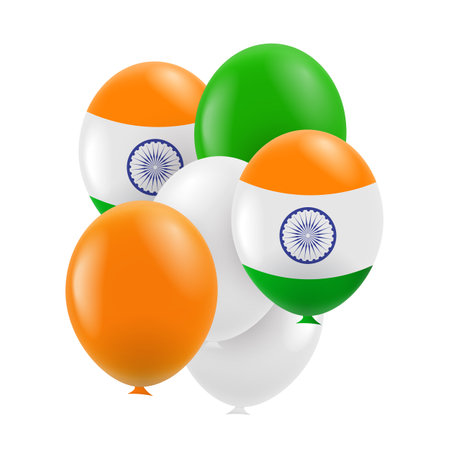1. Understanding SEO for Indian Social Media
SEO, or Search Engine Optimization, is not just for websites—it plays a vital role in social media content as well, especially in the diverse digital landscape of India. When crafting content for platforms like Instagram, Facebook, and ShareChat, it’s important to understand how Indian audiences discover, engage with, and share posts. Most Indians use their native languages such as Hindi, Tamil, Telugu, Bengali, or Marathi when searching or interacting on social media. This means that optimizing content with relevant Indian language keywords and hashtags can significantly improve visibility and engagement.
Indian social media users often rely on trending topics, region-specific hashtags (for example, #DilSeDelhi or #ChennaiExpress), and vernacular expressions to connect with local communities. The way content is discovered—either through platform search functions, algorithm-driven feeds, or WhatsApp forwards—differs from Western patterns. For example, ShareChat and Moj prioritize regional content and reward creators who use local terms and culturally resonant storytelling.
To truly boost your SEO for Indian audiences on social platforms, it’s crucial to monitor local trends and language preferences regularly. By understanding what your target audience is searching for in their mother tongue and how they interact with brands and influencers online, you can tailor your content to maximize reach and foster authentic engagement across India’s vibrant digital ecosystem.
Importance of Regional Indian Languages
India is a land of linguistic diversity, with over 22 officially recognized languages and hundreds of dialects spoken across its vast regions. Creating social media content in regional Indian languages such as Hindi, Tamil, Bengali, Telugu, Marathi, Kannada, Malayalam, and others enables brands to connect with audiences at a grassroots level. When brands speak the language of their audience, it fosters trust, relatability, and stronger emotional engagement.
Local language content addresses the cultural nuances and preferences that generic English content often overlooks. This approach not only improves user experience but also broadens a brand’s digital footprint. By speaking directly to users in their mother tongue, brands can overcome the barrier of language and tap into previously underserved markets.
Benefits of Using Regional Languages for Social Media Content
| Language | Community Reach | Cultural Impact | SEO Potential |
|---|---|---|---|
| Hindi | Largest number of native speakers in India | Highly relatable; connects with rural & urban audiences alike | High search volume for local keywords |
| Tamil | Strong presence in Tamil Nadu & diaspora worldwide | Deep cultural roots; appeals to regional pride | Significant opportunity in local search rankings |
| Bengali | Second most spoken language in India; large online community | Engages West Bengal & Bangladesh audiences effectively | Increasing demand for Bengali digital content |
| Telugu | Mainly Andhra Pradesh & Telangana; growing global audience | Culturally rich traditions reflected in local campaigns | Niche SEO advantage in South India searches |
| Others (Marathi, Kannada, etc.) | Diverse state-level communities; loyal followers | Localized messaging drives higher interaction rates | Lesser competition; easier to rank on local keywords |
The Digital Expansion Opportunity
As internet penetration increases across tier 2 and tier 3 cities in India, more users are searching and engaging online in their native languages. By creating region-specific content, brands not only boost their SEO rankings but also build lasting relationships within these communities. Adopting an Indian language-first strategy helps businesses stand out amid fierce competition and positions them as truly local players—trusted by their target audience.

3. Optimising Keywords for Indian Vernaculars
When aiming to boost SEO for social media content in Indian languages, keyword optimisation stands as a game-changer. India’s digital audience searches in Hindi, Tamil, Telugu, Bengali, and other regional languages—each with its own set of popular search terms.
Conducting Keyword Research in Indian Languages
Start by using tools like Google Keyword Planner or SEMrush, but set your language filter to the local vernacular you want to target. Explore trending hashtags on platforms such as Instagram and Twitter that are used by real people in your region. Dive into forums and local groups where your target audience discusses topics relevant to your brand. Don’t forget about YouTube autocomplete and Google Trends—they reveal what people are actually searching for in their native tongue.
Understanding Popular Search Terms
Popular search terms often include colloquial words, local slang, or even Hinglish (Hindi-English mix) phrases. For instance, a Mumbai-based food business should research not just “street food,” but also “Mumbai ka famous vada pav” or “best chaat near me” in Hindi script. Identify both short-tail and long-tail keywords that reflect how your audience naturally speaks and types.
Including Keywords Effectively in Social Media Content
Integrate these keywords seamlessly into your social media captions and posts without sounding forced. Use them at the beginning of your captions for better visibility and sprinkle them throughout descriptions, alt texts, and hashtags. Maintain authenticity: let your brand voice shine while keeping it relatable to the local culture. Regularly monitor which keywords bring the most engagement and update your keyword list accordingly—digital habits in India evolve rapidly, so staying agile is key.
4. Cultural Nuances and Content Localisation
Understanding and leveraging cultural nuances is crucial when creating SEO-optimized social media content in Indian languages. India’s vast diversity means that what resonates in one state might not connect with audiences in another. Localising your content to reflect region-specific themes, idioms, festivals, and trending topics can significantly enhance engagement and relatability.
Why Culturally Relevant Content Matters
Audiences are more likely to interact with posts that feel personal and familiar. By incorporating local festivals, popular sayings, and trending discussions unique to each Indian state, brands build trust and foster a sense of belonging. This also encourages shares and conversations, boosting organic reach through authentic connections.
Examples of State-Specific Themes
| State | Popular Festival | Common Idiom/Proverb | Trending Topic Example |
|---|---|---|---|
| Maharashtra | Ganesh Chaturthi | “Doodh ka doodh, pani ka pani” | Marathi cinema launches |
| Tamil Nadu | Pongal | “Vandhaachu vaasalu” | Kabaddi tournaments |
| West Bengal | Durga Puja | “Aaste aaste” (Slowly but surely) | Bengali literature awards |
| Punjab | Baisakhi | “Chardi kala” (High spirits) | Punjabi music releases |
| Karnataka | Dasara (Mysore Dasara) | “Ondu sala kelidre saaku” (Ask once is enough) | Kannada film industry news |
Tips for Effective Content Localisation:
- Research Regional Trends: Use tools like Google Trends and Twitter hashtags to identify hot topics in different states.
- Integrate Local Language Idioms: Pepper your posts with phrases that locals use in daily conversation for an instant connection.
- Celebrate Local Festivals: Create special campaigns or wishes around regional festivals to tap into the festive spirit.
- Engage with Local Influencers: Partner with micro-influencers who understand the pulse of their community for authentic reach.
- A/B Test Localised Posts: Experiment with content variants tailored for different states to track what drives the most engagement and SEO value.
Cultural localisation is not just about translation—it’s about transformation. By aligning your content strategy with the unique cultural DNA of each Indian region, you unlock higher relevance, stronger loyalty, and greater SEO impact on social media platforms.
5. Leveraging Hashtags and Trends in Indian Languages
Using trending hashtags and tapping into language-specific topics is a powerful way to boost the SEO of your social media content, especially when targeting India’s diverse online communities. India is a nation of many languages—Hindi, Tamil, Telugu, Bengali, Marathi, Kannada, Malayalam, Punjabi, and more—each with its own set of cultural trends and viral moments. To maximise your visibility and engagement, it is crucial to align your content with these local digital conversations.
Why Local Hashtags Matter
Hashtags are the bridge that connects your content with ongoing discussions. By including popular and relevant hashtags in regional languages such as #हिंदीट्रेंड्स (Hindi Trends), #தமிழ்செய்திகள் (Tamil News), or #తెలుగుఅప్డేట్స్ (Telugu Updates), your posts become discoverable to users searching for content in their mother tongue. This not only increases your post’s reach but also builds trust and relatability among local audiences.
How to Find Trending Indian Language Hashtags
Start by monitoring what’s trending on platforms like Twitter, Instagram, and ShareChat in various Indian languages. Tools like Google Trends can be filtered by region and language to identify what people are searching for right now. Social listening tools tailored for India, such as Brandwatch or Talkwalker, can help you spot emerging topics across multiple languages. Don’t forget to observe competitors’ posts—often, local brands will use niche hashtags that perform well within specific states or linguistic groups.
Engaging with Regional Topics
Crafting content around festivals like Diwali (#दिवाली2024), Pongal (#பொங்கல்2024), or local events such as IPL cricket matches (#आईपीएल) in regional scripts shows your brand understands and celebrates Indian diversity. When you weave these topics organically into your posts using the right hashtags, you increase the likelihood of shares and interactions from those communities.
Best Practices for Using Hashtags Effectively
- Mix global, national, and hyper-local hashtags in each post for maximum reach.
- Avoid overloading your post; 3-5 highly relevant hashtags per language work best.
- Create branded hashtags in different scripts to encourage user-generated content.
By consistently leveraging trending hashtags and regional topics in Indian languages, you’ll not only amplify your SEO but also foster deeper connections with India’s multilingual digital audience. Stay updated on linguistic trends and be quick to participate in conversations relevant to each community for sustained social media growth.
6. Measuring Success: Metrics that Matter
To ensure your SEO-optimised social media content in Indian languages delivers the desired impact, it’s crucial to track meaningful metrics. Evaluating these key performance indicators (KPIs) will provide a clear picture of how well your strategy is resonating with diverse audiences across India.
Post Reach and Impressions
The first step is to monitor post reach—the total number of unique users who have seen your content. In the context of Indian languages, this helps you understand which regions and linguistic communities are engaging with your posts. Impressions, meanwhile, indicate how many times your content has appeared on screens, regardless of whether it was clicked. Both metrics are foundational for gauging brand visibility in local markets like Tamil Nadu, Maharashtra, or West Bengal.
Engagement Rates: Likes, Comments, and Shares
Engagement rate is a direct reflection of how relevant and compelling your content is to users in different Indian states. Track metrics such as likes, comments, shares, and saves to see which language versions generate the most interaction. For example, a post in Hindi might spark more discussion in North India, while Malayalam content could drive deeper engagement in Kerala. High engagement often signals effective localisation and cultural resonance.
Click-Through Rates (CTR)
The click-through rate measures the percentage of people who clicked on links within your posts after seeing them. Analysing CTR by language allows you to pinpoint which content formats or topics motivate action among various linguistic groups—be it Telugu speakers in Hyderabad or Punjabi audiences in Chandigarh.
Conversion Metrics: Leads and Sales
The ultimate goal of social media marketing is conversion—whether that means generating leads, app downloads, sign-ups, or sales. Use analytics tools to trace conversions back to specific language-based posts. For instance, if Bengali content consistently drives more website registrations from Kolkata, you’ll know where to focus future efforts.
Bounce Rate and Time Spent on Page
If your social media content drives users to your website or landing page, measure the bounce rate (how quickly they leave) and the average time spent on each page. Lower bounce rates and higher time-on-page numbers suggest that your localised messaging is attracting the right visitors and keeping their interest.
Custom KPIs for Regional Campaigns
Finally, tailor additional KPIs to specific regional goals—for example, festival campaign participation during Diwali or Onam, or user-generated content creation in Marathi or Kannada. By focusing on these nuanced metrics, you’ll gain deeper insight into what truly drives success in India’s dynamic multilingual landscape.
By systematically tracking these KPIs, businesses can continually refine their SEO strategies for social media content across Indian languages—maximising reach, boosting engagement, and ultimately driving measurable growth at the hyperlocal level.


